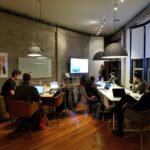Reimagining Developer Growth Trajectories Through Mentorship Design in Offshore Software Development
Why Developer Growth Matters in Offshore Software Development
Understanding the Link Between Developer Growth and Project Success
Offshore software development has come a long way from being viewed purely as a cost-saving measure. Today, it’s a strategic approach for accessing global talent and building scalable, diverse teams. In this landscape, the professional development of individual developers is essential—not just for their own careers, but for the overall success of the projects they contribute to.
When offshore developers are supported with structured growth opportunities, it pays dividends across the organization. You’ll see better code quality, more initiative in problem-solving, and stronger alignment with project goals. These benefits are especially important in distributed teams, where smooth collaboration and clear communication are critical to keeping projects on track.
Countries like Vietnam, Poland, and the Philippines have become key players in offshore development, thanks to strong technical education systems and vibrant developer communities. But bringing out the best in these teams takes more than just hiring—it requires a thoughtful approach to mentorship and career development.
The Challenges of Nurturing Talent in Distributed Teams
Supporting developer growth in offshore teams isn’t without its challenges. Time zone differences can slow down feedback cycles, cultural nuances may affect communication, and the lack of in-person interaction can make it harder to build trust.
Without a clear structure in place, offshore developers may feel disconnected from the broader team. This can lead to lower engagement, reduced productivity, and higher turnover—issues that can seriously impact fast-moving development efforts.
Many developers in offshore hubs are eager to grow but don’t always have access to experienced mentors or consistent feedback. Without guidance, their development can stall, and their ability to contribute meaningfully may be limited.
To overcome these obstacles, companies need to rethink how they design mentorship and growth opportunities for their offshore teams.
How Mentorship Design Can Transform Offshore Teams
What Effective Mentorship Looks Like in a Distributed Environment
In an offshore setting, mentorship needs to be intentional and structured. It’s not just about occasional check-ins—it’s about creating a consistent system for learning, feedback, and career progression.
Successful mentorship programs often include pairing less experienced developers with seasoned engineers, setting clear development goals, and using tools that support asynchronous communication. These elements help maintain continuity, even when teams are spread across multiple time zones.
In places like Vietnam and Ukraine, where developers are known for their technical skill and motivation, structured mentorship can help align local practices with global standards. This not only supports individual growth but also leads to more consistent and higher-quality project outcomes.
When mentorship is designed with the realities of distributed work in mind, it becomes a powerful tool for building stronger, more capable offshore teams.
Building a Culture of Growth in Offshore Software Development
Creating a growth-oriented culture starts with leadership. Managers and team leads need to treat mentorship as a core part of team development—not just a nice-to-have. That means dedicating time, resources, and recognition to mentorship efforts.
Integrating growth conversations into regular reviews and retrospectives helps normalize continuous learning. Tools that support code reviews, knowledge sharing, and skill tracking can make mentorship more scalable and measurable.
When developers in regions like Vietnam, Romania, or Mexico see a clear path for advancement, they’re more likely to stay engaged, take ownership of their work, and contribute to innovation. A strong growth culture not only boosts retention but also improves morale and productivity.
What Companies Can Do to Support Developer Growth
Practical Steps for Designing Mentorship Programs
To build a mentorship program that works, start by assessing where your team stands today. Identify gaps in feedback, learning opportunities, and mentor availability.
Then, define clear roles for mentors and mentees, and provide training to help them build effective relationships. This is especially important in cross-cultural teams, where expectations and communication styles may differ.
Use tools like mentorship plans, progress trackers, and regular check-ins to keep things on track. Encourage pairings that cross functions and cultures to build empathy and broaden perspectives.
Finally, measure the impact. Track performance, retention, and project quality to see how mentorship is influencing outcomes. Use this data to refine your approach and show stakeholders the value of investing in developer growth.
Case Examples: What’s Working in Offshore Development Hubs
In Vietnam, some development centers have introduced mentorship ladders, where junior developers are matched with mid-level engineers and senior architects. This layered system promotes both technical growth and leadership development.
In Eastern Europe, peer mentorship circles have become popular. They help reduce isolation and encourage knowledge sharing—two key needs in remote work environments.
In Latin America, some teams are integrating mentorship tools directly into their project management systems. This allows developers to track their growth alongside project milestones, reinforcing the connection between personal development and team success.
These examples show that with the right design, mentorship can thrive in offshore teams—regardless of location or structure.
What’s Next? Creating a Long-Term Vision for Developer Growth
Aligning Mentorship with Business Goals
For mentorship to have lasting impact, it needs to align with broader business objectives—like innovation, code quality, and team scalability. When mentorship supports these goals, it becomes easier to justify and sustain over time.
This alignment also helps teams prioritize mentorship activities and measure their effectiveness in tangible ways.
Sustaining Growth in a Global Talent Landscape
As offshore software development continues to grow, companies need to think beyond short-term staffing. The focus should be on building high-performing, sustainable teams—and mentorship is one of the best ways to do that.
Investing in structured mentorship helps retain top talent, encourage innovation, and stay competitive in a global market. In emerging hubs like Vietnam, where the developer community is expanding rapidly, these programs can unlock significant potential.
Ultimately, by rethinking how we support developer growth, offshore teams can evolve from service providers into strategic partners that drive long-term success.




